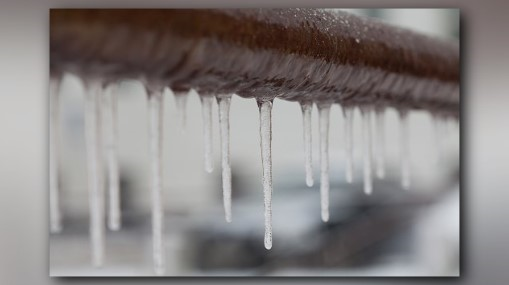Protecting Against Frozen Plumbing in Winter: Professional Advice
Protecting Against Frozen Plumbing in Winter: Professional Advice
Blog Article
We've stumbled on this post relating to Winter Plumbing Precautions: Preventing Frozen Pipes directly below on the net and accepted it made good sense to relate it with you on this site.

Winter can ruin your pipes, particularly by freezing pipelines. Right here's how to stop it from occurring and what to do if it does.
Intro
As temperatures drop, the danger of icy pipelines boosts, possibly resulting in pricey repair work and water damages. Understanding exactly how to stop frozen pipelines is important for home owners in cold climates.
Recognizing Icy Pipes
What causes pipes to freeze?
Pipelines freeze when subjected to temperatures listed below 32 ° F (0 ° C) for expanded durations. As water inside the pipes freezes, it broadens, taxing the pipe wall surfaces and possibly causing them to rupture.
Threats and damages
Frozen pipelines can bring about supply of water interruptions, property damage, and pricey repairs. Burst pipes can flood homes and trigger considerable architectural damages.
Indications of Frozen Pipes
Determining icy pipes early can avoid them from breaking.
Exactly how to determine icy pipes
Seek decreased water flow from faucets, unusual smells or noises from pipelines, and visible frost on subjected pipelines.
Avoidance Tips
Protecting prone pipelines
Cover pipelines in insulation sleeves or use heat tape to secure them from freezing temperature levels. Concentrate on pipes in unheated or exterior areas of the home.
Heating strategies
Maintain interior spaces effectively heated up, especially locations with plumbing. Open cupboard doors to enable warm air to circulate around pipes under sinks.
Safeguarding Outdoor Pipes
Garden hose pipes and outdoor taps
Disconnect and drain garden hoses prior to winter season. Install frost-proof spigots or cover exterior taps with protected caps.
What to Do If Your Pipelines Freeze
Immediate activities to take
If you think frozen pipes, keep faucets available to ease pressure as the ice thaws. Make use of a hairdryer or towels taken in warm water to thaw pipes gradually.
Long-Term Solutions
Architectural adjustments
Consider rerouting pipelines far from outside wall surfaces or unheated locations. Add added insulation to attics, cellars, and crawl spaces.
Updating insulation
Purchase top quality insulation for pipes, attic rooms, and walls. Proper insulation aids preserve consistent temperatures and decreases the risk of icy pipes.
Verdict
Protecting against icy pipelines calls for aggressive steps and fast feedbacks. By recognizing the causes, indications, and preventive measures, house owners can protect their pipes during winter.
5 Ways to Prevent Frozen Pipes
Drain Outdoor Faucets and Disconnect Hoses
First, close the shut-off valve that controls the flow of water in the pipe to your outdoor faucet. Then, head outside to disconnect and drain your hose and open the outdoor faucet to allow the water to completely drain out of the line. Turn off the faucet when done. Finally, head back to the shut-off valve and drain the remaining water inside the pipe into a bucket or container. Additionally, if you have a home irrigation system, you should consider hiring an expert to clear the system of water each year.
Insulate Pipes
One of the best and most cost-effective methods for preventing frozen water pipes is to wrap your pipes with insulation. This is especially important for areas in your home that aren’t exposed to heat, such as an attic. We suggest using foam sleeves, which can typically be found at your local hardware store.
Keep Heat Running at 65
Your pipes are located inside your walls, and the temperature there is much colder than the rest of the house. To prevent your pipes from freezing, The Insurance Information Institute suggests that you keep your home heated to at least 65 degrees, even when traveling. You may want to invest in smart devices that can keep an eye on the temperature in your home while you’re away.
Leave Water Dripping
Moving water — even a small trickle — can prevent ice from forming inside your pipes. When freezing temps are imminent, start a drip of water from all faucets that serve exposed pipes. Leaving a few faucets running will also help relieve pressure inside the pipes and help prevent a rupture if the water inside freezes.
Open Cupboard Doors
Warm your kitchen and bathroom pipes by opening cupboards and vanities. You should also leave your interior doors ajar to help warm air circulate evenly throughout your home.

I'm very excited about How to prepare your home plumbing for winter weather and I hope you enjoyed the new entry. Don't hesitate to set aside a second to promote this page if you enjoyed it. Thank you for your time. Come back soon.
Click Here Report this page